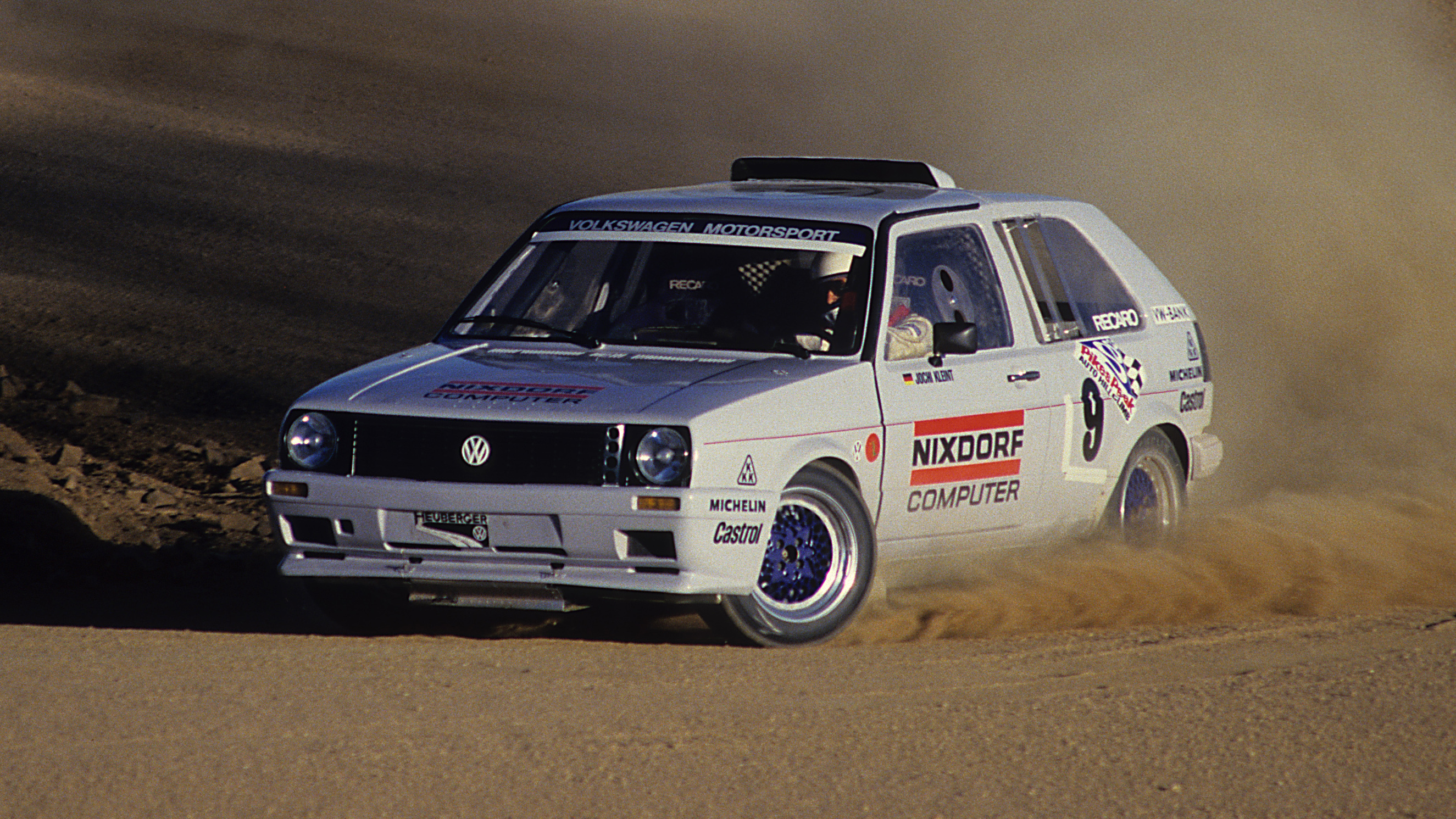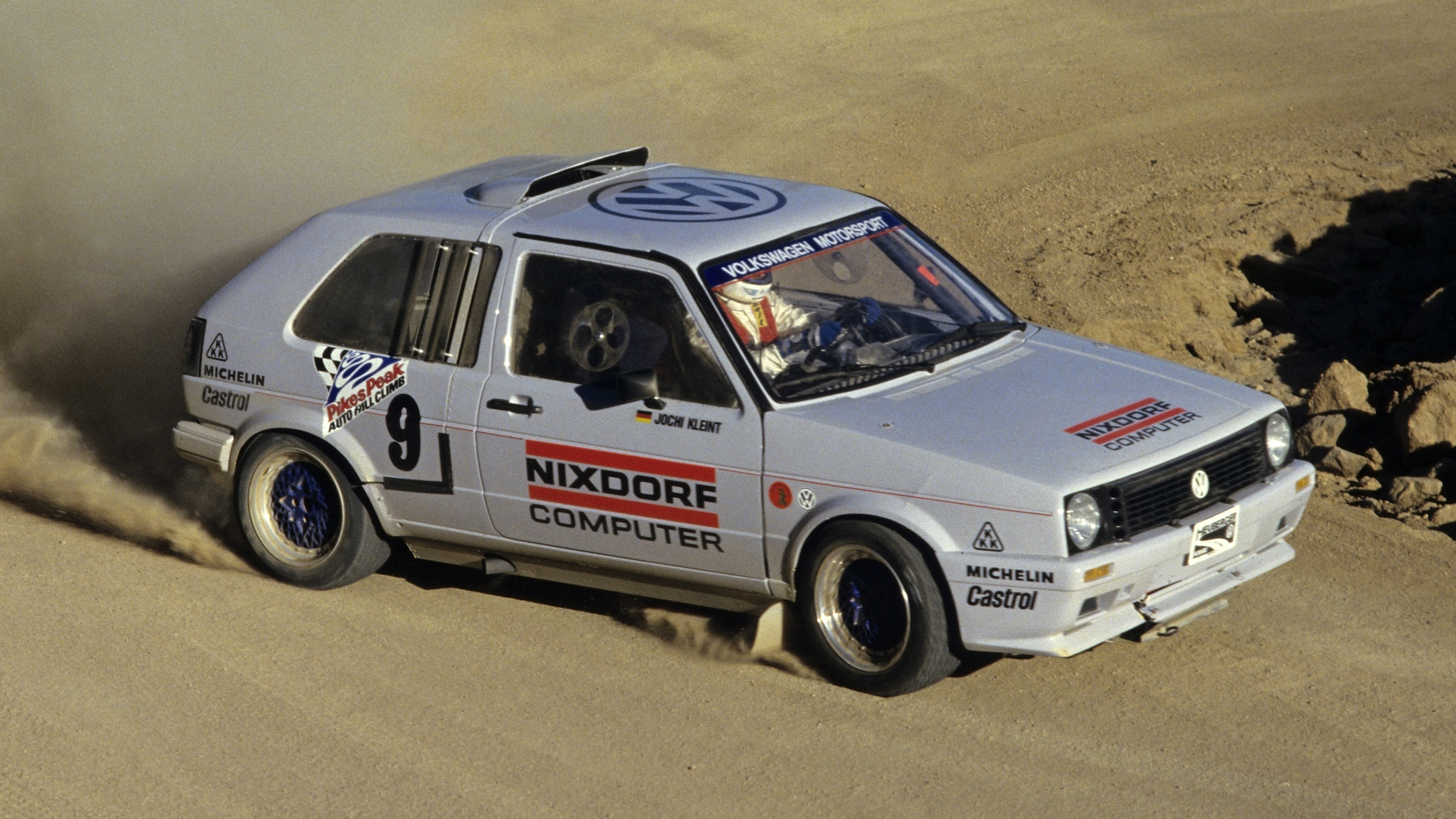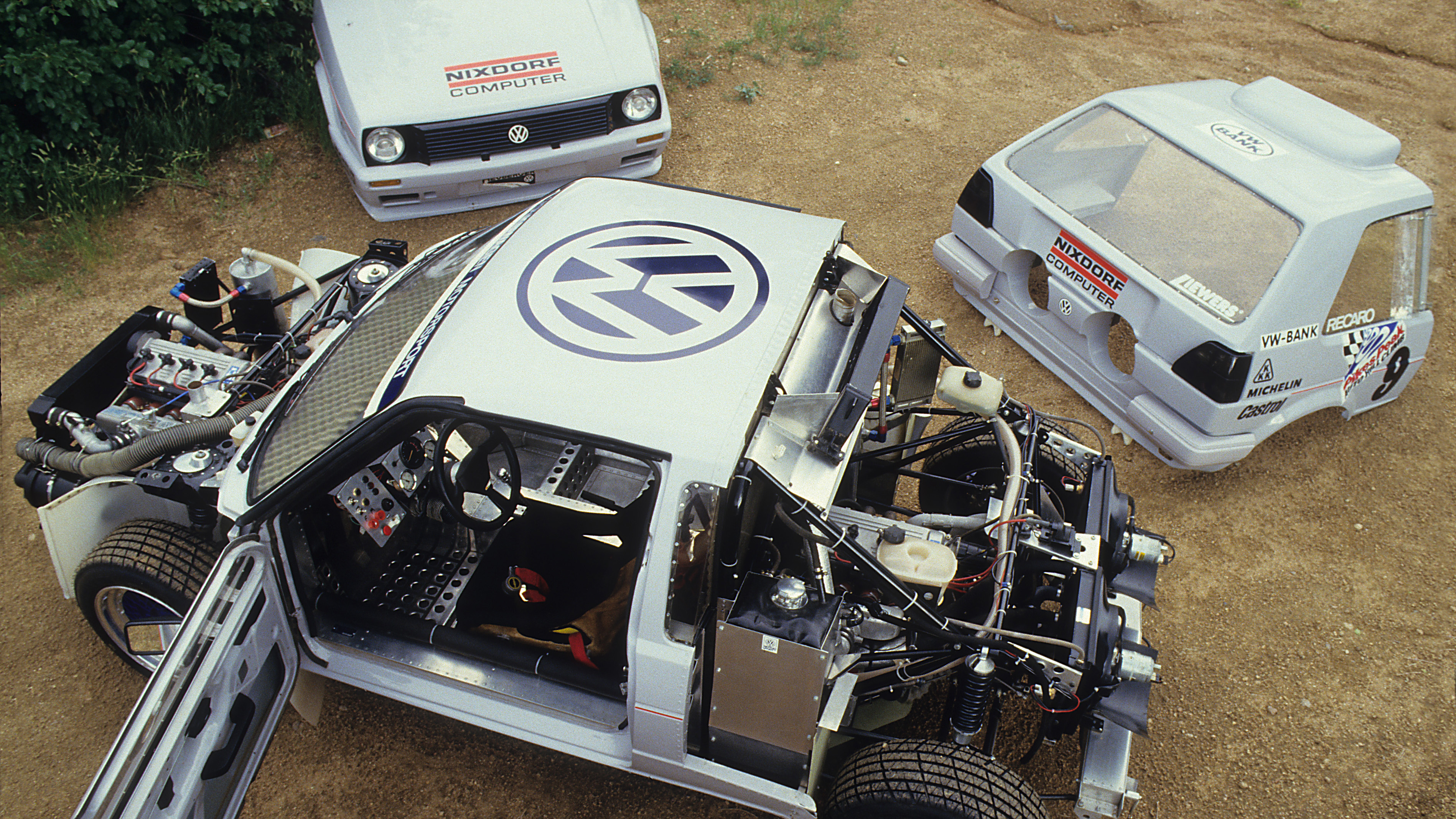
This twin-engined 640bhp VW Golf was almost a Pikes Peak legend
Here’s why VW has unfinished business with that infamous Colorado hillclimb
So, VW has thrown weapons-grade engineering, space-age aerodynamics and more money than the GDP of several third world nations at its new Pikes Peak challenger, the all-electric I.D. R.
Its aim is to smash the Pikes Peak hillclimb record for EVs, and with 670bhp and a 0-62mph time of 2.25 seconds, plus more aero than the entire Royal Air Force, it stands a pretty strong chance.
But why go to all that effort, besides keeping VW’s company message on ultra-clean EVs to put that whole diesel issue far in the rear-view mirror? Well, it’s got much to do with this one-off 1987 Golf. VW tried for Pikes Peak glory thirty-one years ago, you see. And came achingly, cruelly close to achieving it.
Back in the Eighties, the idea of using a battery-powered car, or an all-carbon racer, to ascend the 2,862m-above-sea-level course, would’ve seemed an idea more outlandish than anything out of Ready Player One. Internal combustion was the order of the day – and lots of it to compensate for the power-sapping altitude. And because this was decades before the course was entirely paved, four-wheel drive and rally-spec suspension was a must.
This begat crazy ideas. One of VW’s finest was to fit a Golf Mk2 with a 1.8-litre, turbocharged four-cylinder engine that developed around 320bhp – more than today’s Golf R. It drove the front wheels alone.
Being sensible, rational, level-headed Germans, Volkswagen’s engineers quickly surmised the car might be a tad… unbalanced. The solution? Build a bespoke clamshell rear end, and slot a second, 1.8-litre, 320bhp engine behind the driver’s seat. Connect that up to the rear wheels, and lo, a 640bhp, four-wheel drive, twin-engine monster-Golf was born.
Missing any massive wings, but housing two tailgate fans to cool the second engine, the Golf was capable of perm-destroying performance. On the flat, it could reach 62mph from standstill in 3.4 seconds. Handy, when there are 156 rather tight corners between you and victory.
Driver Jochi Kleint wanted that victory. He’d scored third place at Pikes Peak in 1985, and fourth in 1986. This had to be his year. And at the halfway stage, all was looking sehr gut. His split times were very quick. The twin-engined Golf was in the lead, performing well, and it still had its secret weapon to deploy. Because of its independently driven axles, Kleint could select front, rear, or all-wheel drive if needed. Handy, if one engine started to misfire, or he wanted to adjust the car’s balance.
With champagne on ice at VW HQ, the Golf made it a quarter-mile from the finish. Three turns to go. And what gave up? Not the fabulously complex transmission, nor the highly tuned engines. A humble suspension ball joint let go at the front, and that was that. With sheer drops either side of the road, and the suspension adrift, the Golf couldn’t safely complete the course. Talk about being robbed.
So, even if the I.D. R looks set to wallop the EV record of 8m 57.118s, don’t switch off the stream before the car crosses the line on 24 June. To finish first, first you have to finish…
Top Gear
Newsletter
Thank you for subscribing to our newsletter. Look out for your regular round-up of news, reviews and offers in your inbox.
Get all the latest news, reviews and exclusives, direct to your inbox.
Trending this week
- Car Review
BMW 1 Series
- Top Gear's Top 9
Nine dreadful bits of 'homeware' made by carmakers










